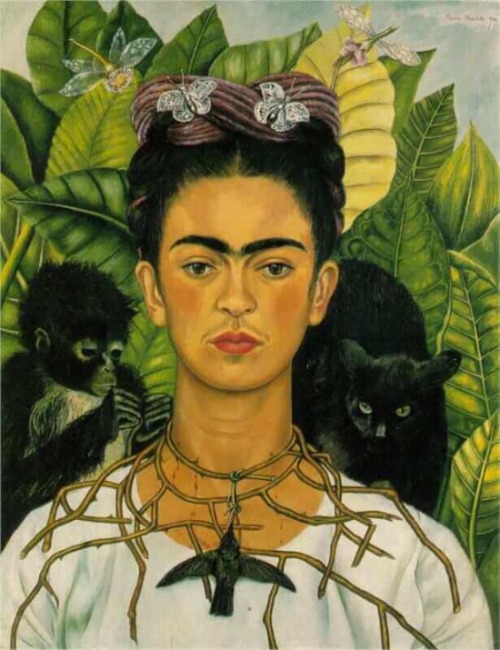
We are facing one of the most famous self-portraits of the Mexican artist Frida Khalo, who paints herself from the front to enhance her presence. The artist painted this work during the crisis of her marriage to the Mexican muralist Diego Rivera. Frida Kahlo’s work stands out for showing the pain and loneliness that devastated her because of her continuous physical problems due to illness. Her paintings are often described as surrealist because they are impregnated with symbolism according to André Breton, although the artist always denied that her paintings were loaded with symbolism, stating that she painted her personal reality.
Frida Khalo: The painter represents herself from the front, she becomes a focal point, something customary in religious icons. Her gaze is between the fine line of anguish and suffering.
Necklace: This accessory resembles the crown of thorns of Christ. It is considered that Frida took this object to express the suffering and humiliation caused by her divorce from Diego Rivera.
Monkey: Symbols of the devil and lust, but for Frida, the domestic monkey symbolizes the love that she did not receive from her husband, as well as the son that she would never have from her.
Hummingbird: This animal represents “Luck in Love” within Mexican traditions. In this work we can see that the hummingbird hangs dead from the necklace with outstretched wings. With this, it can be inferred that the artist wanted to reflect the agony that she suffered for Diego, his sorrows in love and how unhappy she felt.
Black cat: Symbolizes bad luck and bad omen in Western culture. The animal appears on her left shoulder, stalking its prey, glaring menacingly at the hummingbird lying on Frida’s chest.
Color: She uses light tones and the texture of each of the leaves in the background enhances her great love for Mexican culture. Butterflies and dragonflies represent Christian symbols of resurrection.



